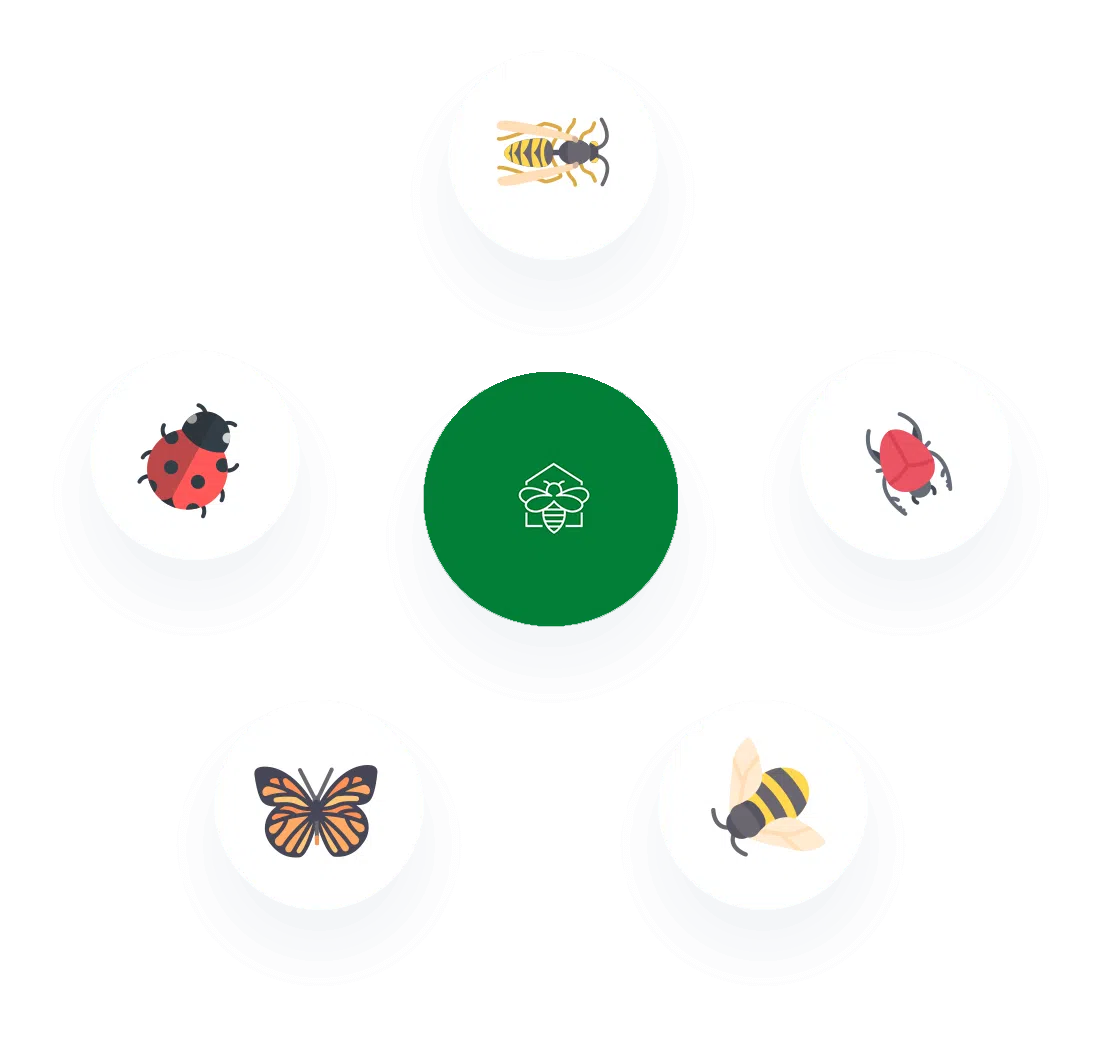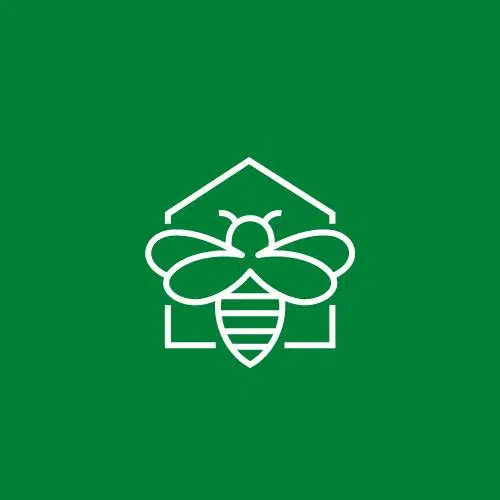The insects
hosts
Find out more about all the insects that can be housed in your insect hotels.
Insects in insect hotels
Insect hotels are home to a variety of fascinating inhabitants. These refuges promote biodiversity and pollination.
Biodiversity
Pollination
Tailor-made

The insects
The hoverfly
The adult stage of this fly feeds on nectar and pollen, while the larvae feed mainly on aphids. Hoverflies are abundant in gardens from March to October, with a peak in June and July.
The red osmia
This solitary bee with a reddish abdomen appears in early spring. It picks the first flowers in the garden, especially those on fruit trees. It is an effective pollinator. In the garden it is cruelly lacking in shelter, hence its interest in holes in facades, windows, etc. A block of wood with a few holes in it, or a bundle of hollow stems, is a good substitute for a home.
It endlessly collects pollen on which it lays its eggs before sealing the cell with earth.
The ladybird
Whether they have two, seven or more spots, ladybirds love aphids. Both larvae and adults are equally effective, consuming up to 100 aphids a day, not counting pollen and nectar.
The gendarme
Wood bugs. The adults, which live in large numbers at the base of trees, feed on seeds and dead insects.
The earwig
Long considered a pest because of the damage it can do to fruit, it is now considered a helper. All you have to do is hang upside down flowerpots filled with hay.
The ground bumblebee
Bumblebees are social or solitary insects similar to bees. They are excellent pollinators thanks to their hairs that hold the pollen grains.
The Hymenoptera
With 120,000 described species, they are the most diverse order of insects after the Coleoptera. They are useful in their role as pollinators.
The wasp
Wasps are also useful in the garden. In the garden, their presence is beneficial: a solitary wasp catches aphids, eats caterpillars, etc. Plant some fennel to attract them.
The cuckoo wasp
The cuckoo wasp gets its name from the fact that it lays its eggs in the larvae of solitary hymenoptera such as osmia. It changes colour according to the direction of the light. Adults feed on nectar from flowers.
The cuckoo bee
Nomada Googdeniana specialises in parasitism, laying its eggs in the nests of other wild bees.
Robert-the-Devil
Robert the Devil winters in hollow trees, sheds, garden sheds, etc. He awakes in spring. Nettle is the main food of his caterpillars.
Lacewings
Fragile and delicate, with a beautiful bright green coat that changes colour in the autumn, the lacewing has only one prey: aphids. Its larva can eat between 200 and 500 during its development.
The parasitic wasp
Adults feed on pollen. The larvae, laid inside the caterpillar's body by the worm, develop and eventually devour the caterpillar.
The volcano
Hibernation stage: adult. The caterpillar feeds on nettles.
The ram caterpillar
Elongated, its general appearance and colours are reminiscent of wasps. An agile and shy beetle, equally at home on the ground or in the air, it has a clear preference for dead wood, especially beech.
The chrysalis
Hibernation; caterpillar or chrysalis. The caterpillar feeds on various grasses.
L’Orgyie Pudibonde
A stocky, hairy insect with a tuft of hair protruding from its back. Adults do not feed. The caterpillar has 4 tufts of white hair in the shape of a badger.
Chrysids or golden wasps
Parasitic on mason wasps and bees because they lay eggs in their nests. In the same family as the cuckoo wasp.
La Sésie-Frelon
A diurnal insect that flies in full sunlight and is characterised by its transparent wings. Caterpillar under the bark of a poplar.
The cardinal
One of the most common Capricorn beetles. It lives in flowers to feed on nectar. The larvae live in dead wood.
